The external Spanish Pyrenees are classic locale for geologists who want to study the interactions between sedimentation and tectonics. The Pyrenees are a fold and thrust belt resulting from the collision of Iberia and Europe. Most of the deformation of the external Pyrenees occurred during the Eocene (56-34 Million years ago). The external Pyrenees are defined as the southern-most region of the Pyrenean range. The rocks that make up the mountains there are actually the deformed foreland basin of the internal Sierras, thus they preserve a unique story of the interaction of erosion, sedimentation, and tectonics.
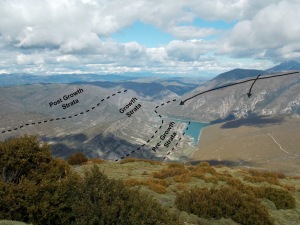 |
|
Growth strata, or sediments that were deposited during deformation, are well exposed on the limbs of external Pyrenean anticlines, as seen here looking east from the Pico D’Aguila anticline near Jaca, Spain. These sediments are used to determine the past rates for deformation and decipher the sequence of tectonic events. Many petroleum geologists come to this location to learn about the interactions between tectonics and sedimentation in order to better understand features seen in seismic sections.
|
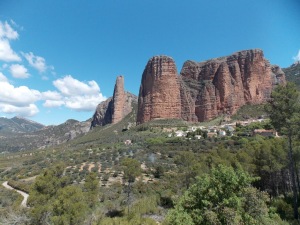 |
|
Large alluvial fans formed at the external Pyrenean mountain front during the Eocene. These fans now exposed as large conglomerate cliffs provide information regarding the timing of deformation. In many places the Pyrenean thrust faults actually thrust over these conglomerates. Now these exposures provide popular rock-climbing routes.
|
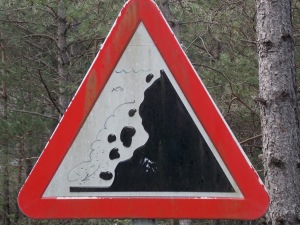 |
|
Most of the deformed rocks in the external Pyrenees are marine sedimentary rocks. There are many great exposures of deep water turbidites. At one particular road-side exposure, I found evidence that previous geologists had been there before.
|
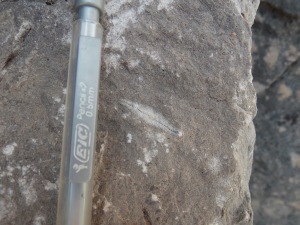 |
|
Evidence of marine deposition is obtained from foraminifera in the limestones. This foram is particularly large and exquisite. It is a species of Alveolina.
|
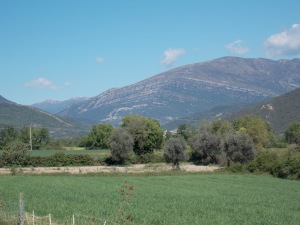 |
|
The external Pyrenees have many structures that trend transverse to the orogen. In many cases this is due to the influence of evaporite deposits influencing structures. This is a view of the Boltana anticline, a widely studied transverse anticline near Ainsa, Spain.
|
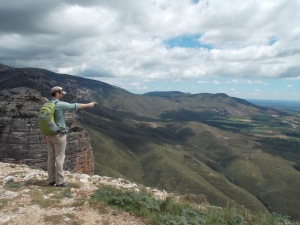 |
|
“There’s some geology out there!”
|
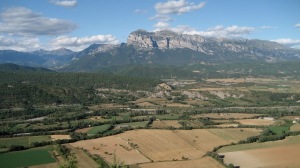 |
|
The Cotiella thrust sheet marks the Northern edge of the external Pyrenees. Beyond this is the high Sierras, the suture zone, and France!
|
 This work is licensed under a Creative Commons Attribution-NonCommercial-ShareAlike 4.0 International License.
This work is licensed under a Creative Commons Attribution-NonCommercial-ShareAlike 4.0 International License.



![]() This work is licensed under a Creative Commons Attribution-NonCommercial-ShareAlike 4.0 International License.
This work is licensed under a Creative Commons Attribution-NonCommercial-ShareAlike 4.0 International License.



